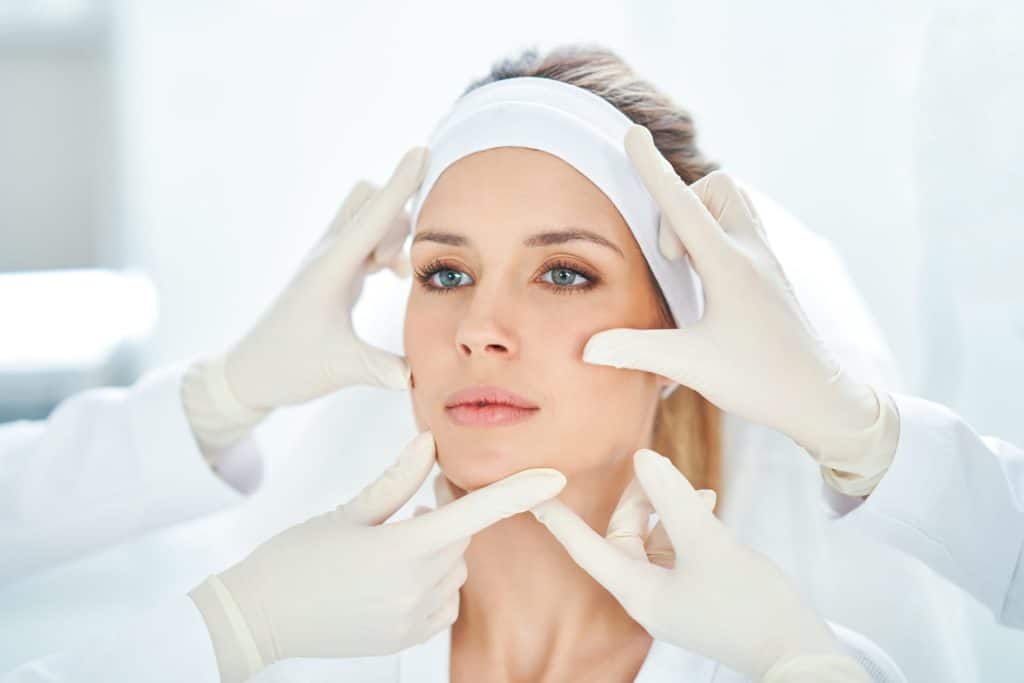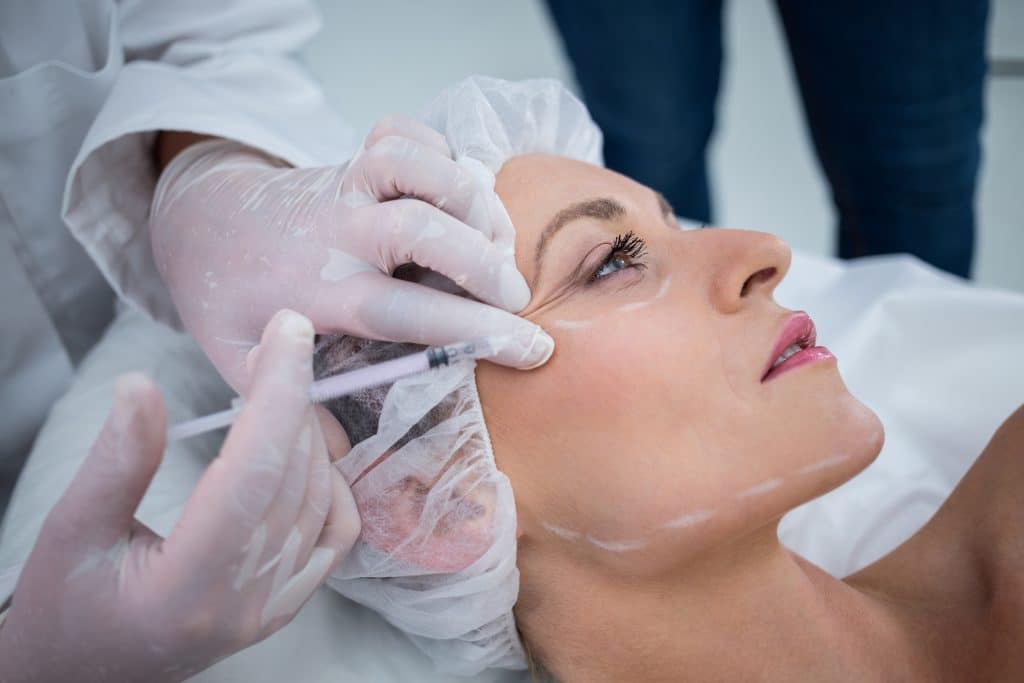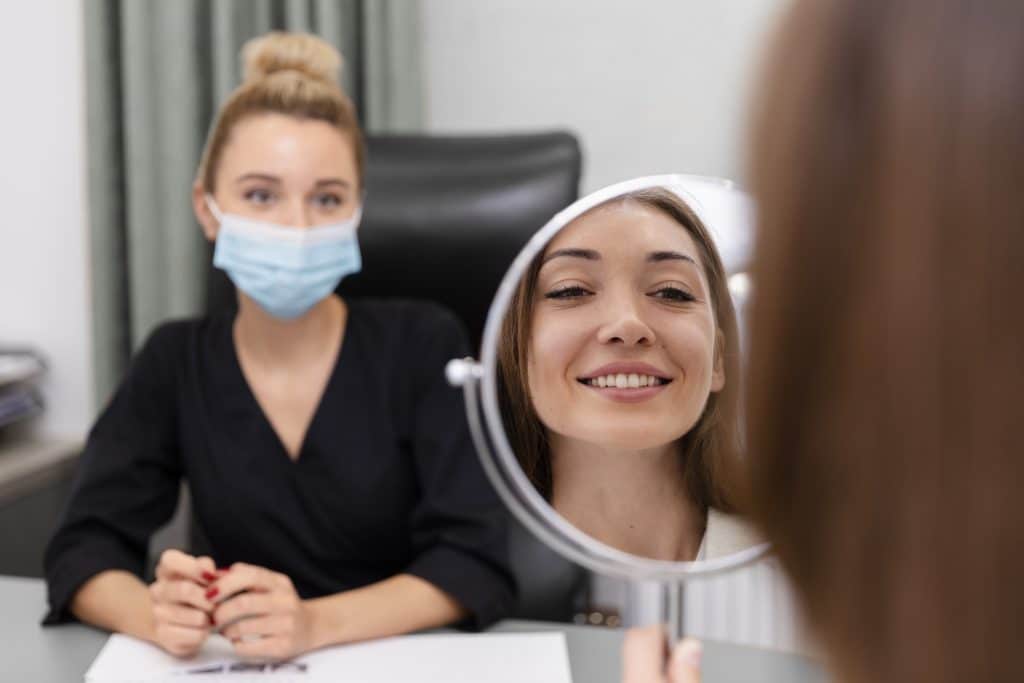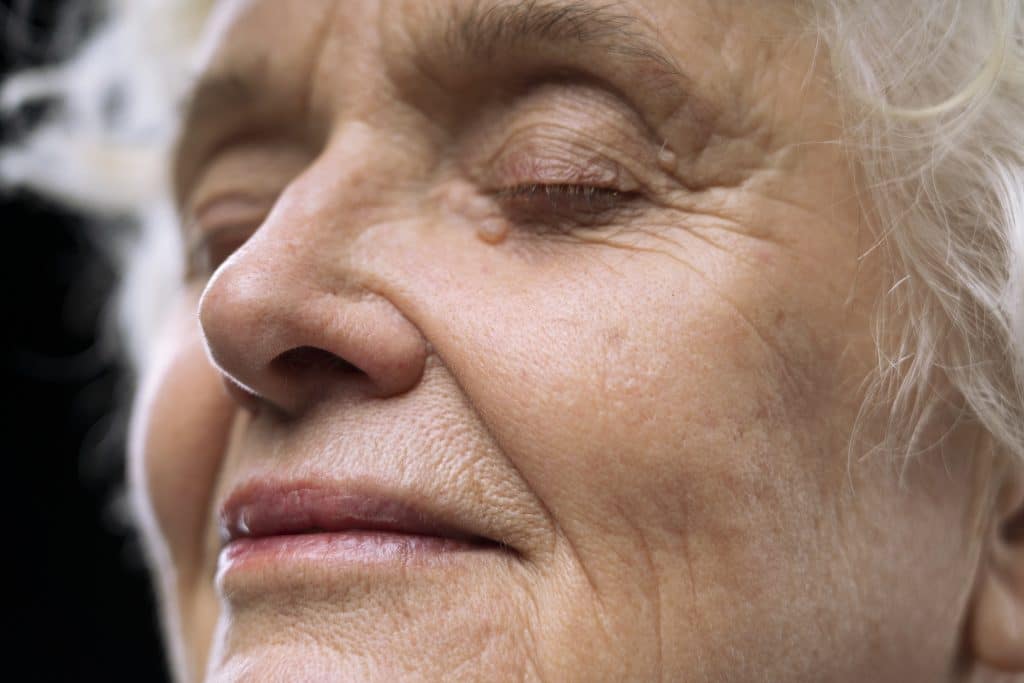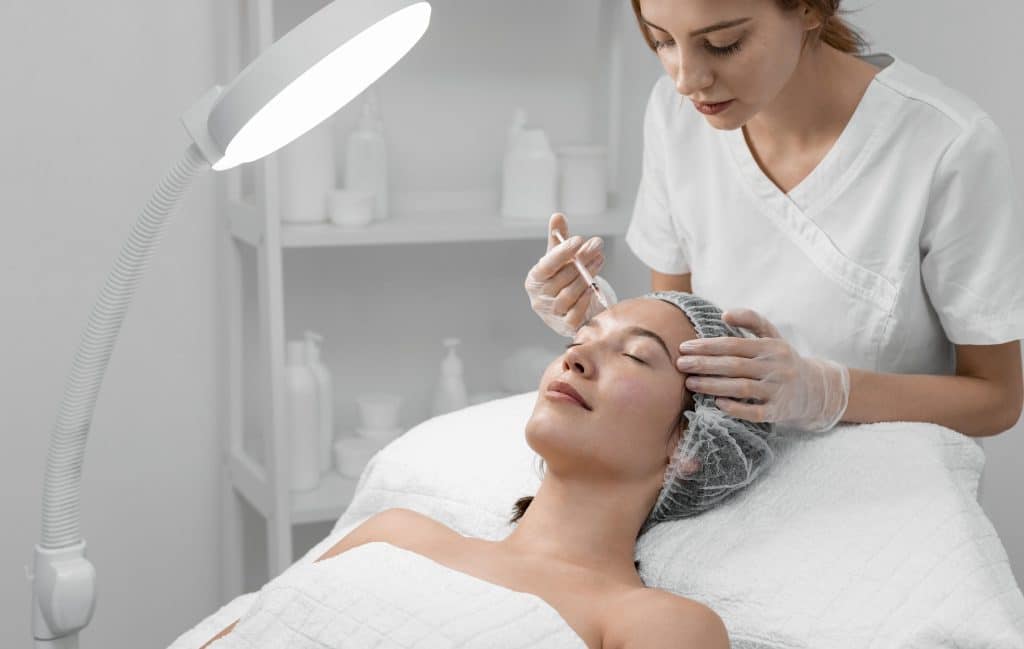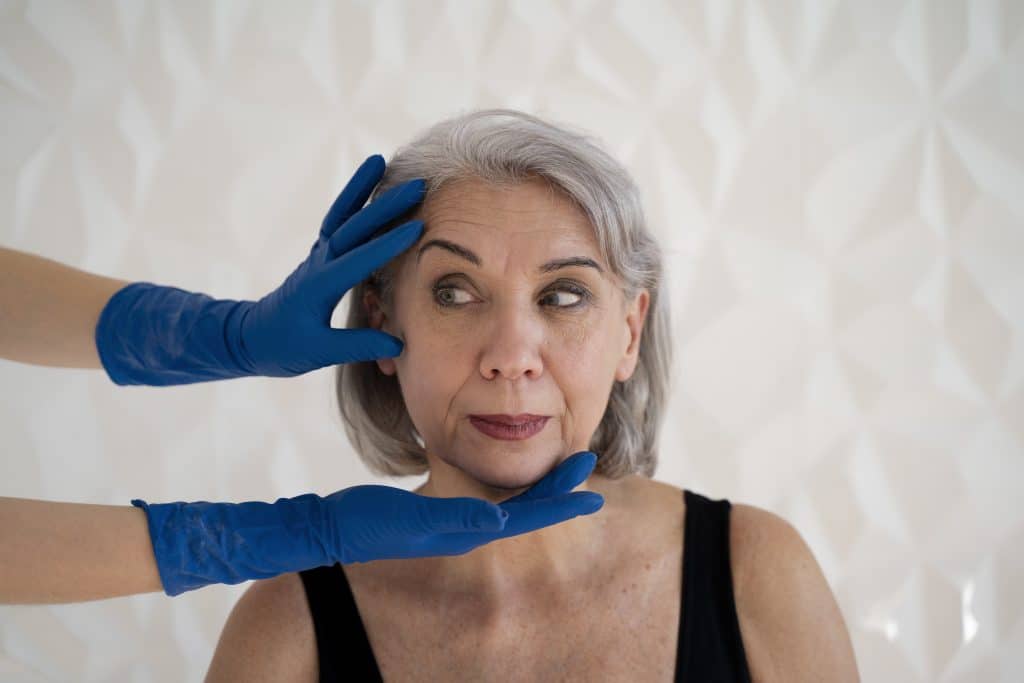Botox is, without a doubt, the most well-known dermal filler of the 21st century. Since it became popular, the drug has been one of the trendiest medical procedures people undergo to improve their looks.
While nowadays, it’s a well-researched and safe filler, plastic surgeons and other medical personnel administering the injections need to be aware of Botox danger zones and complications of the procedure.
What is Botox?
Botox is a neurotoxin produced by the bacterium Clostridium botulinum. It works by blocking the release of acetylcholine, a neurotransmitter that triggers muscle contractions. When injected into specific muscles, Botox causes temporary paralysis, relaxing the muscles and reducing the appearance of wrinkles; or treating medical conditions such as muscle spasms or hyperhidrosis.
Botox is commonly used for cosmetic purposes to reduce the appearance of fine lines and wrinkles by relaxing the muscles responsible for these facial expressions. It is most frequently used to treat wrinkles on the forehead, between the eyebrows, and around the eyes (crow’s feet).
However, Botox also has therapeutic uses for various medical conditions, such as muscle spasms, chronic migraines, excessive sweating, and overactive bladder. Botox injections alleviate symptoms in these cases by temporarily relaxing the affected muscles.
Danger Zones for Botox Injections
While Botox is safe to inject, health providers must know the complicated regions of the face when administering the injections.
These areas are commonly known as danger zones, and each one has its own specific “danger” when Botox is injected.
Forehead (frontalis muscle)
Although the forehead is the most common place for Botox injections, it has two risky areas that are best avoided. Administering Botox too low on the forehead leads to a “sad” look, with drooping of the eyebrows. Injecting it too high will drastically raise eyebrows – a look often referred to as “Spock eyebrows”, which every patient wants to avoid.
Eye area
The area around the eyes is not only the most delicate; but also the most dangerous Botox zone. When Botox is administered too close to the eyes, it can cause drooping of the eyelids (ptosis), causing eyelids not to close correctly, leading to several complications like irritation, dryness, and even impaired vision.
Temples
A Botox treatment for temples can also lead to vision issues, including double and blurred vision.
Nasolabial folds and lips
Typically, an area that’s hard to treat, it’s also one of the Botox injection danger zones: the treatment can lead to unnatural looks and also cause difficulty speaking and smiling.
Chin and neck
It’s inadvisable to inject Botox into these areas, as it can weaken muscles, lead to difficulty swallowing, and potentially cause aspiration pneumonia (swelling and infection of large airways).
A licensed, trained medical professional with excellent anatomy knowledge should always inject Botox. It’s also essential to follow the proper injection technique and dosage, as too much Botox can cause significant harm and lead to the complications mentioned above in facial muscles.
Last, proper aftercare and informing the patient pre- and post-injection about the procedure ensures the effect of Botox is fully realized.
How to Avoid Botox Complications
As a medical professional administering Botox injections, you are also responsible for your patient’s safety during and after the treatment. To minimize the chances of complications and achieve the best possible results, here is a short guide on avoiding any possible Botox complications.
Thoroughly Review the Patient’s Medical History
Before administering Botox injections, conducting a thorough medical history review with your patient is essential. Obtain information on allergies, underlying medical conditions, medications, and supplements they may take. Use this information to determine if Botox is safe for the patient, and to adjust the dosage accordingly.
Properly Inject Botox
Administering Botox injections requires a specific technique to avoid complications. A sterile needle and syringe for each injection protect the patient from infections.
You must also use the appropriate dilution ratio of Botox to saline to achieve the desired dose. Use a slow, steady injection technique to avoid over-injection or rapid product spread.
Educate Patients on Post-Injection Care
Explaining the dangers of Botox and teaching the patients about post-injection care is crucial to ensure the best possible results and minimize the chances of complications. Advise your patients to avoid rubbing or massaging the injection site for at least 24 hours post-treatment. Encourage them to avoid strenuous physical activity or excessive sun exposure for 24-48 hours post-treatment.
Patient Follow-up
Monitor your patients for potential complications, such as bruising, swelling, or infection. If any of these occur, address them promptly and appropriately. Scheduling regular appointments will allow you to check on your patients and ensure the Botox has worked as intended, with no complications.
Botox Injection Tips
Proper Botox injection technique is essential for the safety of the treatment, especially at or around the Botox danger zones. Here are some tips for proper Botox injection technique:
- Selecting the correct needle is crucial for proper injection technique. Use a 30-gauge needle with a 1/2 inch to 1 inch length, depending on the injection area.
- Before administering Botox injections, have the patient remove any makeup or skincare products from the area of injection. Cleanse the area with an alcohol swab to minimize the risk of infection.
- Use the appropriate dilution ratio of Botox to saline to achieve the desired dose. A general rule of thumb is to use 2.5-3 units of Botox per 0.1 ml of saline.
- Identify the correct muscle or muscles to be injected based on the patient’s anatomy and treatment goals. Learn how to avoid Botox injection danger zones, nerves, and arteries.
- Inject Botox slowly and steadily.
- Administer the appropriate amount of Botox based on the patient’s individual anatomy and treatment goals. Do not exceed the recommended dosage.
- Apply pressure for a few seconds to the injection site after injection to minimize the risk of bleeding or bruising.
- After injection, monitor the patient for adverse effects, such as swelling or bruising. Advise the patient to avoid rubbing or massaging the injection site for at least 24 hours.
Remember – Botox is intended for injections directly into the muscle tissue. Botox injected too superficially cannot produce the desired effect.
Conclusion
Like most dermal fillers, Botox is not without certain risks. Administering Botox injections requires specialized knowledge and expertise to avoid complications. Understanding the anatomy of the face and identifying filler danger zones is critical to ensuring a safe and effective treatment.
FAQ
Where is the riskiest place for Botox?
Injecting Botox around the eyes is considered the riskiest procedure, as the risks include drooping eyelids, irritation, dry eyes, and impaired vision in the worst-case scenario.
What is the danger zone for Botox in the forehead?
Injecting Botox too high or too low on the forehead is considered unsafe. It may lead to droopy eyebrows or unnaturally raise the patient’s eyebrows.
What is the safest area to get Botox?
Despite being one of the Botox danger zones, the forehead is considered a generally safe area. Other safe areas for Botox treatments are glabella and crow’s feet.
Reference list
The whole truth about botulinum toxin – a review; Henryk Witmanowski and Katarzyna Błochowiak, 2020 Dec
https://www.ncbi.nlm.nih.gov/pmc/articles/PMC7874868/
Rare Complication of Botox Injection: A Case Report; Abdolreza Rouientan, Hamidreza Alizadeh Otaghvar, Hossein Mahmoudvand, and Adnan Tizmaghz, 2019 Jan
https://www.ncbi.nlm.nih.gov/pmc/articles/PMC6409137/
Complications of Botulinum toxin A: An update review; George Kroumpouzos MD, Martin Kassir MD, Mrinal Gupta MD, Anant Patil MD, Mohamad Goldust MD, 2021 Apr
https://onlinelibrary.wiley.com/doi/full/10.1111/jocd.14160
Clinical analysis of 86 botulism cases caused by cosmetic injection of botulinum toxin (BoNT); Bai, Lili PhD; Peng, Xiaobo PhD; Liu, Yanqing PhD; Sun, Yawei PhD; Wang, Xin PhD; Wang, Xingwang PhD; Lin, Guodong PhD; Zhang, Peng PhD; Wan, Kun PhD; Qiu, Zewu PhD, 2018 Aug
https://journals.lww.com/md-journal/Fulltext/2018/08240/Clinical_analysis_of_86_botulism_cases_caused_by.1.aspx
Avoiding Complications on the Upper Face Treatment With Botulinum Toxin: A Practical Guide; Andre Borba, Suzana Matayoshi & Matheus Rodrigues, 2021 Aug
https://link.springer.com/article/10.1007/s00266-021-02483-1
